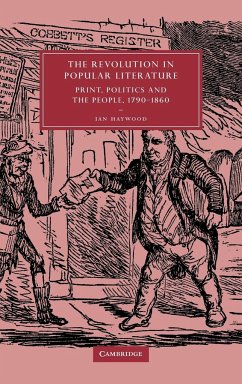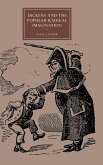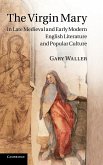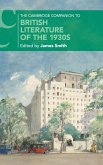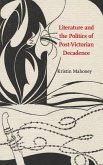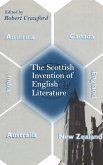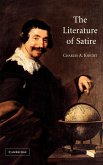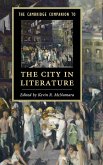Short description/annotation
This book takes a new look at the evolution of popular literature in Britain in the Romantic and Victorian periods.
Main description
This book takes a new look at the evolution of popular literature in Britain in the Romantic and Victorian periods. Ian Haywood argues that developments in the history of popular literature emerged from its intersection with radical and reactionary politics of the time. Both sides wanted to win the heart and mind of the 'common reader' and used books to try to influence a newly literate group in society. Making use of a wide range of archival and primary sources, he argues that radical politics played a decisive role in the transformation of popular literature from the plebeian miscellany of the 1790s to the mass-circulation fiction and popular journalism of the 1840s. By charting the key moments in the history of 'cheap' literature, the book casts new light on the many neglected popular genres and texts: the 'pig's meat' anthology, the female-authored didactic tale, and Chartist fiction.
Table of contents:
Illustrations; Abbreviations; Introduction; Part I. 'A New Area in Our History': 1. The people's Enlightenment: the radical diffusion of knowledge in the late eighteenth century; 2. Writing for their country: the plebeian public sphere in the 1790s; 3. The pax femina(?)33; Hannah More, counter-revolution, and the politics of female agency; Part II. 'Virtuous Public Excitement': 4. The Palladium of liberty: radical journalism and repression in the postwar era; 5. 'Democratic fervour and journal ascendancy': popular culture and the 'unstamped' wars of the 1830s; Part III. A Literature of Their Own: 6. The Chartist revolution; 7. Fathers of the cheap press or 'able speculators'(?)33; Edward Lloyd and George W. M. Reynolds; 8. The rights and wrongs of women; 9. Acts of oblivion: 1848 and after.
Hinweis: Dieser Artikel kann nur an eine deutsche Lieferadresse ausgeliefert werden.
This book takes a new look at the evolution of popular literature in Britain in the Romantic and Victorian periods.
Main description
This book takes a new look at the evolution of popular literature in Britain in the Romantic and Victorian periods. Ian Haywood argues that developments in the history of popular literature emerged from its intersection with radical and reactionary politics of the time. Both sides wanted to win the heart and mind of the 'common reader' and used books to try to influence a newly literate group in society. Making use of a wide range of archival and primary sources, he argues that radical politics played a decisive role in the transformation of popular literature from the plebeian miscellany of the 1790s to the mass-circulation fiction and popular journalism of the 1840s. By charting the key moments in the history of 'cheap' literature, the book casts new light on the many neglected popular genres and texts: the 'pig's meat' anthology, the female-authored didactic tale, and Chartist fiction.
Table of contents:
Illustrations; Abbreviations; Introduction; Part I. 'A New Area in Our History': 1. The people's Enlightenment: the radical diffusion of knowledge in the late eighteenth century; 2. Writing for their country: the plebeian public sphere in the 1790s; 3. The pax femina(?)33; Hannah More, counter-revolution, and the politics of female agency; Part II. 'Virtuous Public Excitement': 4. The Palladium of liberty: radical journalism and repression in the postwar era; 5. 'Democratic fervour and journal ascendancy': popular culture and the 'unstamped' wars of the 1830s; Part III. A Literature of Their Own: 6. The Chartist revolution; 7. Fathers of the cheap press or 'able speculators'(?)33; Edward Lloyd and George W. M. Reynolds; 8. The rights and wrongs of women; 9. Acts of oblivion: 1848 and after.
Hinweis: Dieser Artikel kann nur an eine deutsche Lieferadresse ausgeliefert werden.

